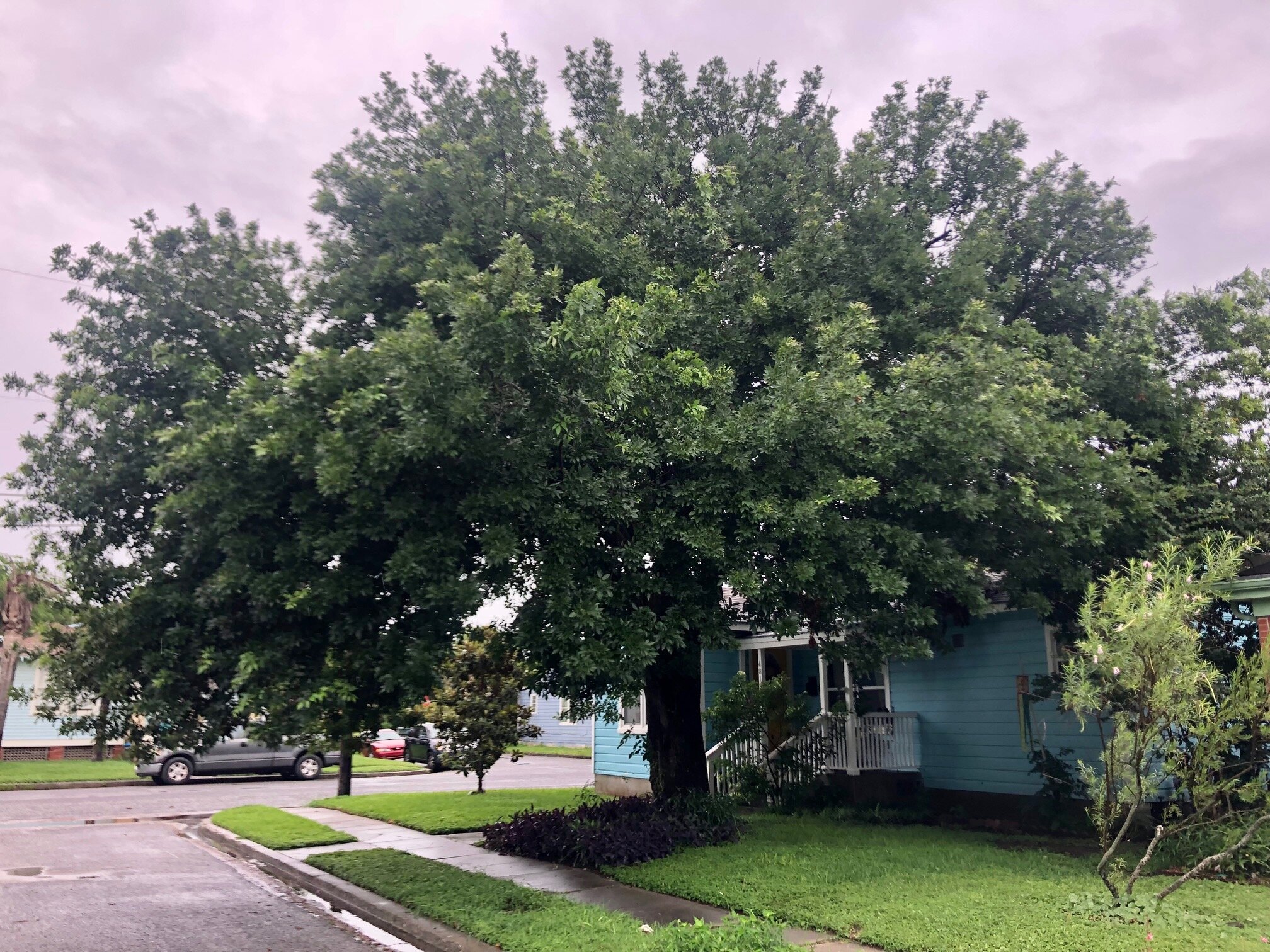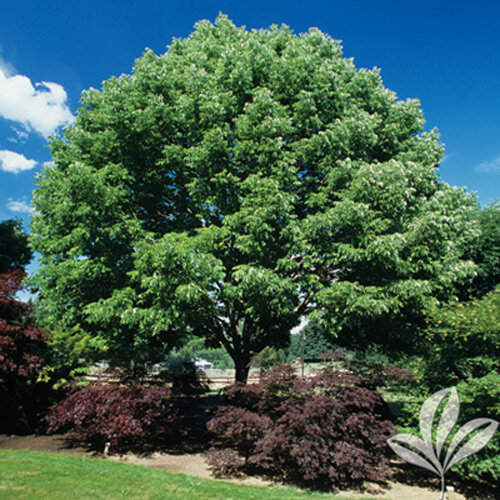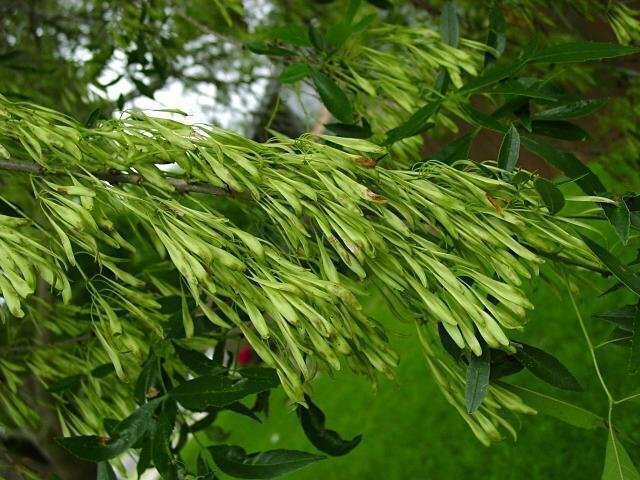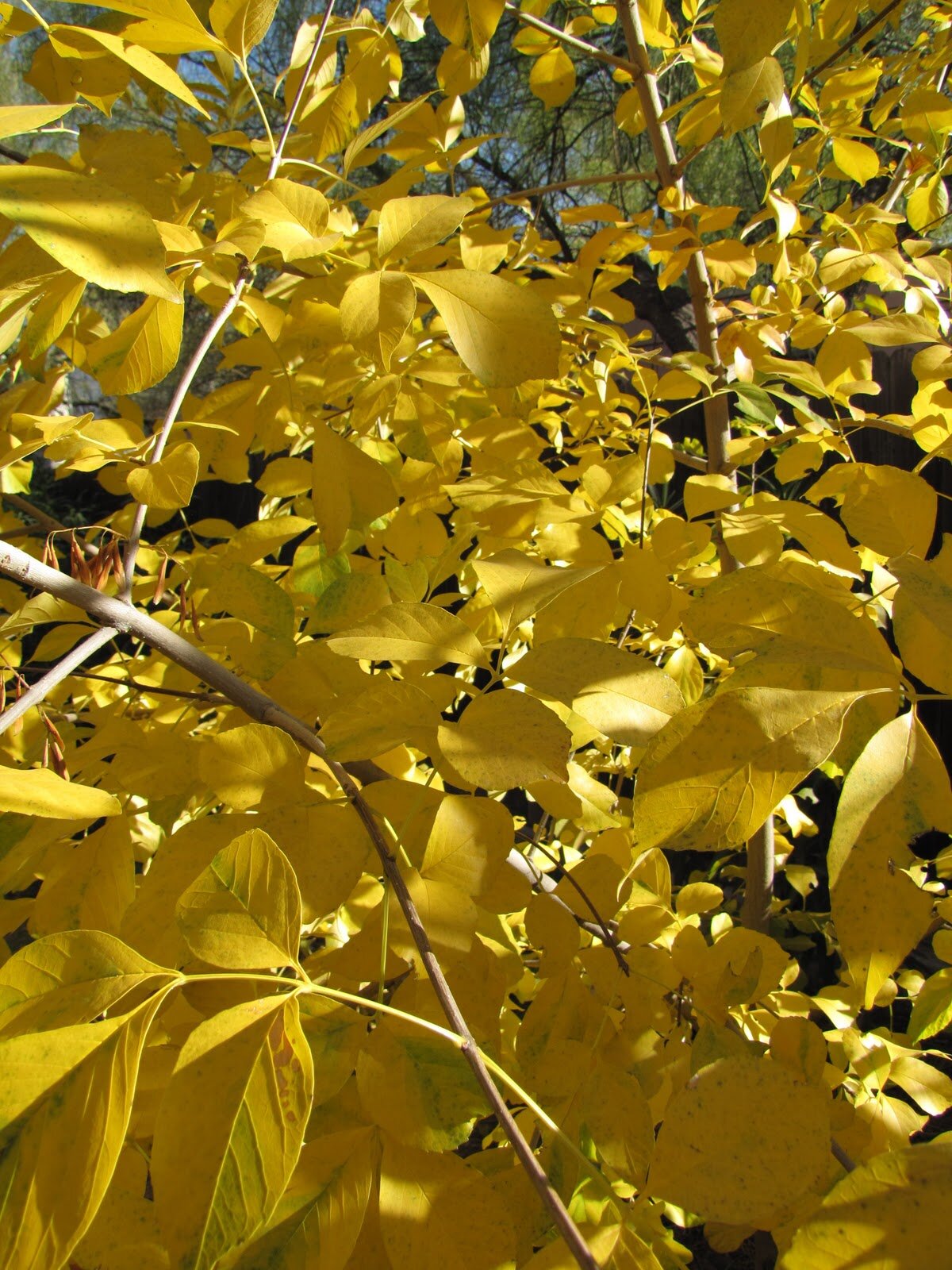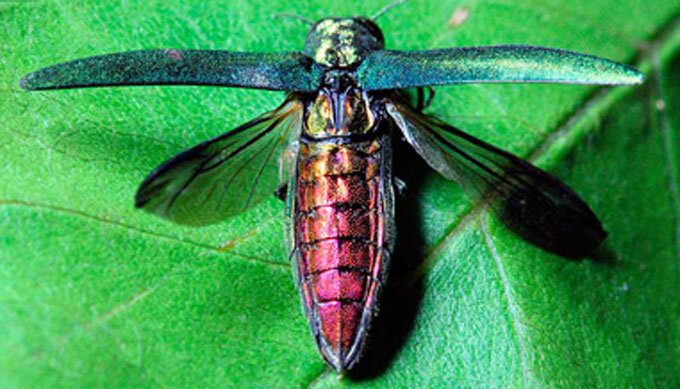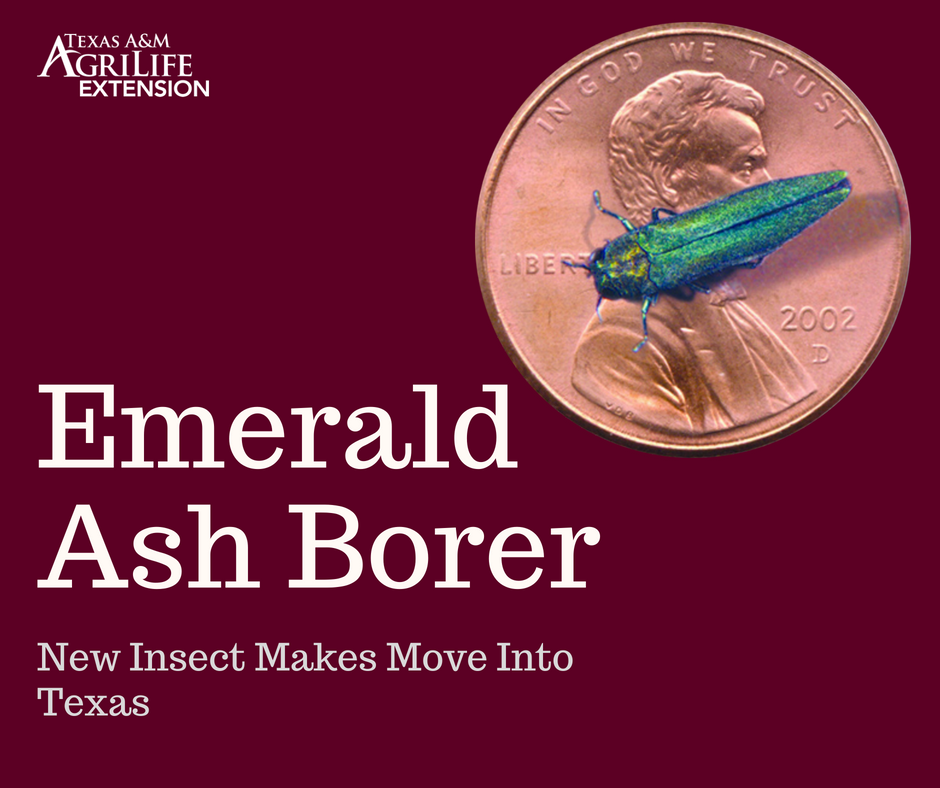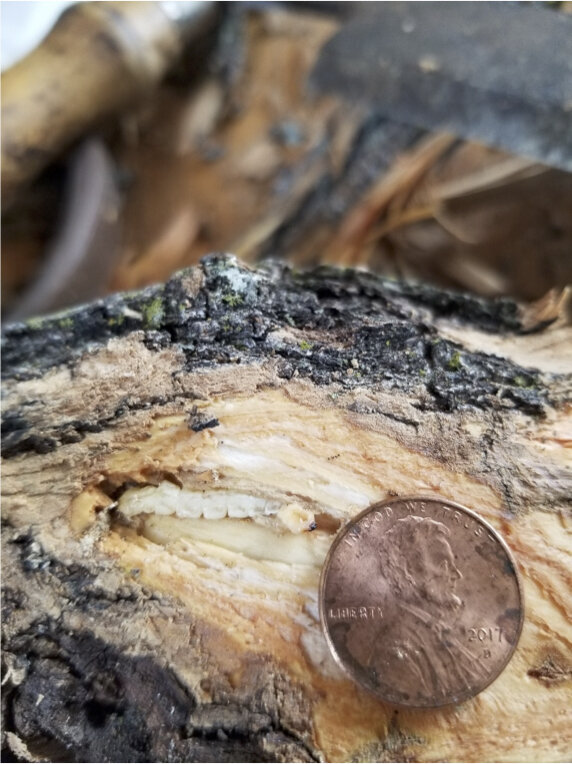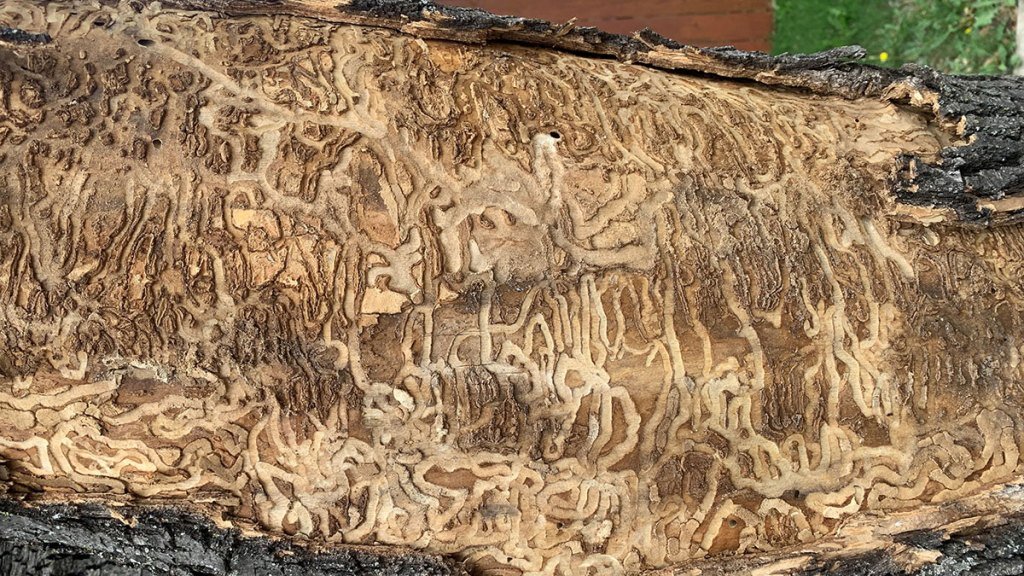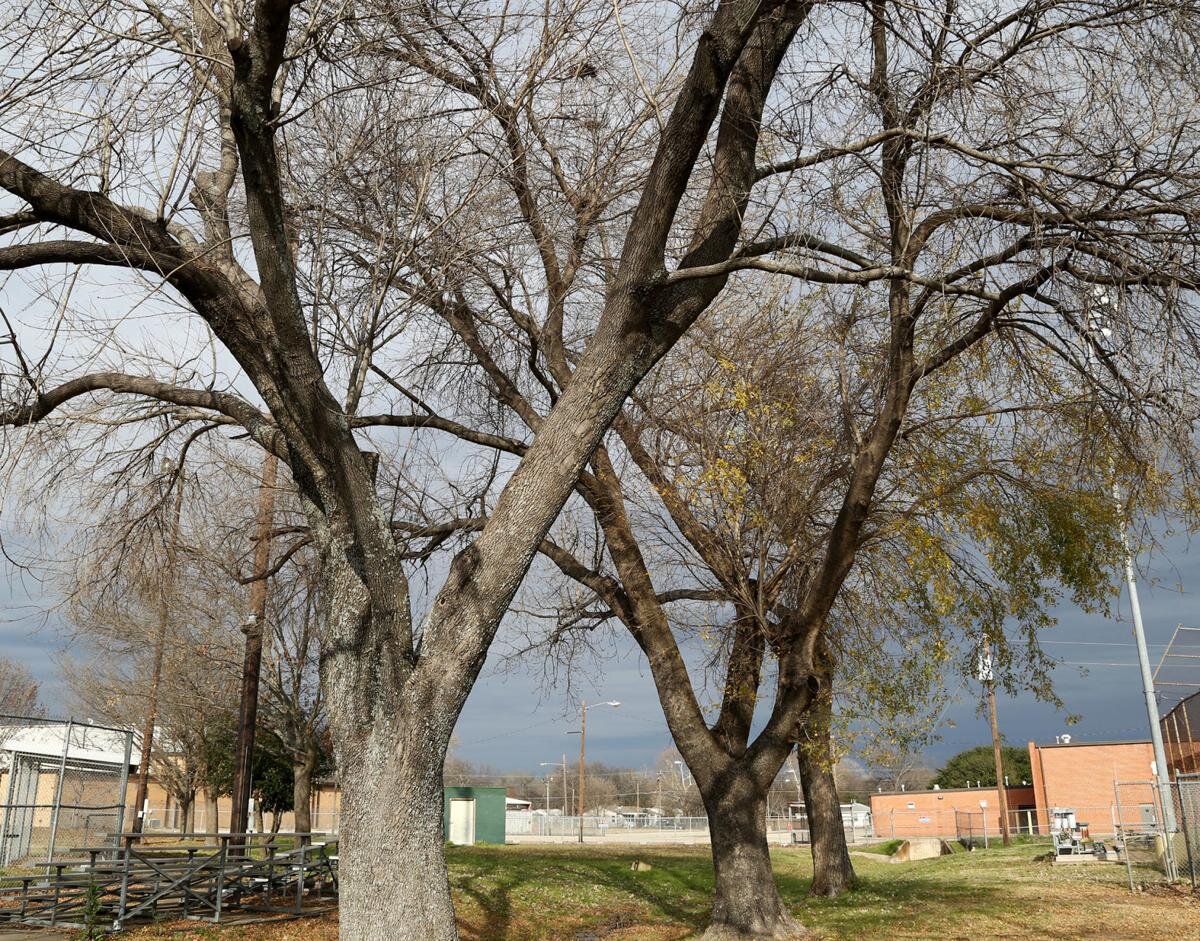Arizona Ash
Tree Stories: Our Many Ash Trees….and a Looming Threat!
Rapidly growing ash trees (Fraxinus spp.) are plentiful on Galveston Island, with hundreds providing much-needed shade. The post-Ike Texas Forest Service survey found over 5% of our street trees to be ash. Adding those on private property might double that percentage. We primarily see Arizona ash, green ash, and Texas ash.
People seem to love or loathe them, particularly Arizona ash (sometimes unkindly called “Arizona trash”). Here’s an example from Aggie Horticulture:
Q. The leaves are falling off of my Arizona Ash tree! What can I do to prevent this?
A: Don't plant an Arizona Ash tree is the best remedy.
They are beloved anyway due to their shade, plus their bright yellow fall color. Small flowers, most visible on female plants, appear in clusters in spring before leaves emerge, followed by small winged seeds.
Ash trees are important residents in US forests, and are popular in residential areas because they are easy to propagate and grow. The wood has many uses: flooring, furniture, sports equipment, and more. Native American cultures use them for traditional crafts and ceremonies. Folk tales that claim the leaves repel rattlesnakes inspire many hunters to put them in their boots for protection. Ash is used as food by the larvae of some butterflies and moths.
Unfortunately, during its short (20-30 years) lifespan the ash is susceptible to diseases and insects, including anthracnose, a fungus which causes spring leaf drop, and borers. Spraying once borers are present is possible, but prevention is more effective. Tree health can be maintained by providing proper fertilization and avoiding drought stress. However, even these do not always prevent problems. So planting less vulnerable trees is the better plan. UPDATE: there are preventive treatments for Ash trees, but are most effective on healthy trees and applied when EAB is identified within about 50 - 60 miles. Multiple treatments may be required. See info below from USDA Forest Service.
Arizona ash in particular was introduced as a drought tolerant, low maintenance tree but has not fulfilled that promise as it requires much attention. It typically begins to experience limb failure after about 15 years. Broken limbs introduce decay and weaken the tree, so frequent trimming by a Certified Arborist and consistent care can increase a tree’s lifespan. It also tends to produce surface roots which can become tripping hazards, and if near a house can cause foundation problems.
A new pest has emerged that threatens all ash trees, although it is not yet in Galveston County: Emerald Ash Borer (EAB). While this critter has a lovely name, the destruction it causes is definitely not so. Since its accidental introduction from Asia in the late 1980s it has killed tens of millions of trees in the US, attacking healthy as well as stressed trees. Infested trees may die within two or three years. The public is cautioned not to transport unfinished wood products, such as firewood, to slow the spread of this pest.
As all ashes are now threatened, the best advice if you already have one is to enjoy it, provide good care, and hope that effective treatment for EAB comes quickly. But for now, if you are planting choose a more suitable tree. Find more information about EAB and recommended trees on the Tree Conservancy webpage, http://galvestonislandtreeconservancy.org/. Click here for up to date USDA Forest Service information about EAB.
“Tree Stories” is an ongoing series of articles about Island trees, tree care, and tree issues. If you have or know of a special tree on Galveston Island that should be highlighted, please email treesforgalveston@gmail.com. Margaret Canavan is a Galveston resident, a Galveston County Master Gardener, and a member of the Galveston Island Tree Conservancy Board.
Hurricane Ike caused the loss of 40,000 trees on Galveston Island. The Galveston Island Tree Conservancy was formed to address that loss and has replaced over 14,000 through grant-funded plantings and giveaways.

